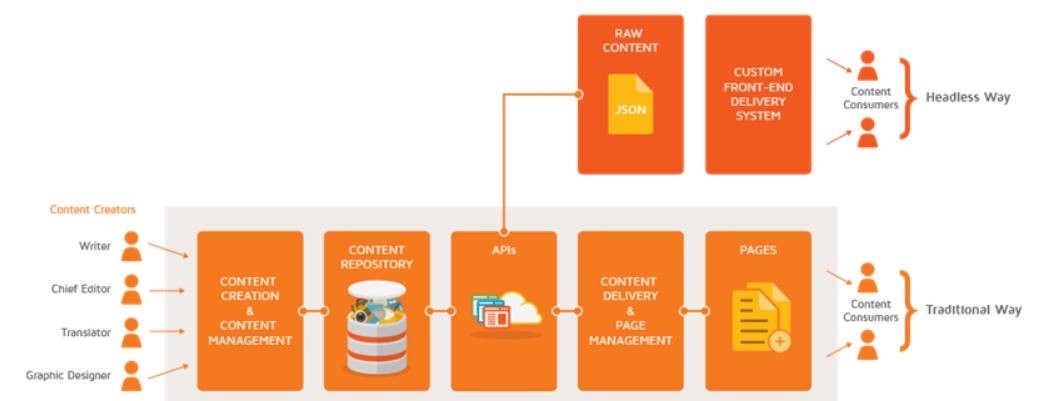Headless CMS. To chop or not to chop?

Background: When coupled was cool
Rise of the omnichannel challenge

Source: CMS Connected
Enter the headless CMS: the good and the not-so-good
This led to the advent of the headless CMS, where instead of including a predefined front end ('head'), the CMS would use REST APIs (representational state transfer application programming interfaces) or GraphQL (a query language for APIs) to attach the back end to multiple heads, as required. The headless CMS usually offers better scalability, security, and content reusability, as well as enabling publishing to different devices, channels, or formats.
Despite its many pros, a pure headless CMS architecture has some inherent disadvantages. From a marketer’s point of view, one of the biggest drawbacks is its lack of preview functionality, typically supported by traditional CMSs with tools such as WYSIWYG editors and standard templates. Moreover, headless CMS solutions lean heavily on developers with the technical expertise to build the experience. This limits the ability of other business functions (marketing, for instance) to make changes.
Choosing between the merits and demerits of traditional and (pure) headless CMS technology can be tricky for mid and large-scale organizations.
Enter – the hybrid CMS
This is where hybrid CMS solutions, such as Tridion's intelligent content platform, Tridion, enter the fray. A hybrid (or 'head-optional') CMS addresses many of the negatives of a pure headless solution. In particular, it offers the best of both the traditional and headless worlds with integrated front-end functionality that is nevertheless independent of the back end. A hybrid CMS is essentially a regular full stack of content management, delivery, and presentation solution, but allows for content stored within it to be leveraged by other systems.”
Comparison of Pure Headless CMS and Hybrid CMS
|
|
Headless CMS |
Hybrid CMS |
|
Architecture |
Back-end +
|
Back end +
|
|
Content management |
Content creation, forms-based editing, organization, storage |
Content creation, WYSIWYG editing, organization, storage |
|
Content delivery |
Only via API to delivery applications and systems |
Directly via its own front-end +
|
|
Content presentation |
None (no templates, themes, etc.) |
Can present formatted content to various channels |
Our CMS solution – the Tridion intelligent content platform – is often cited as a leading example of a hybrid CMS. We've also adopted a decoupled architectural approach, cognizant of the need to keep content management and content publishing strictly separated as independent functions to offer superior security. Here are some key strengths of the RWS solution:
- BluePrinting®. This foundational technology lets you reuse content for different channels without duplication while benefiting from having a single source of truth and great content governance.
- GraphQL. While traditional CMSs play catchup, our headless delivery capabilities use GraphQL, giving it an edge over many competing CMS vendors.
- Translation. Conscious of the needs of global enterprises, RWS is among the few vendors that offer a range of built-in translation management functions, helping to eliminate delays in getting quality content to all of your markets.
- Tridion accelerators. These let you take advantage of prebuilt connectors, sample code and documentation to embed Tridion into your larger digital ecosystem quickly and efficiently.
As a parting note, I would like to add that RWS has always advocated that your actual use cases should be the primary factor determining whether your choice of CMS should be traditional, headless, or (for the flexibility to pursue either approach) a hybrid solution like Tridion.
Updated: May of 2023
